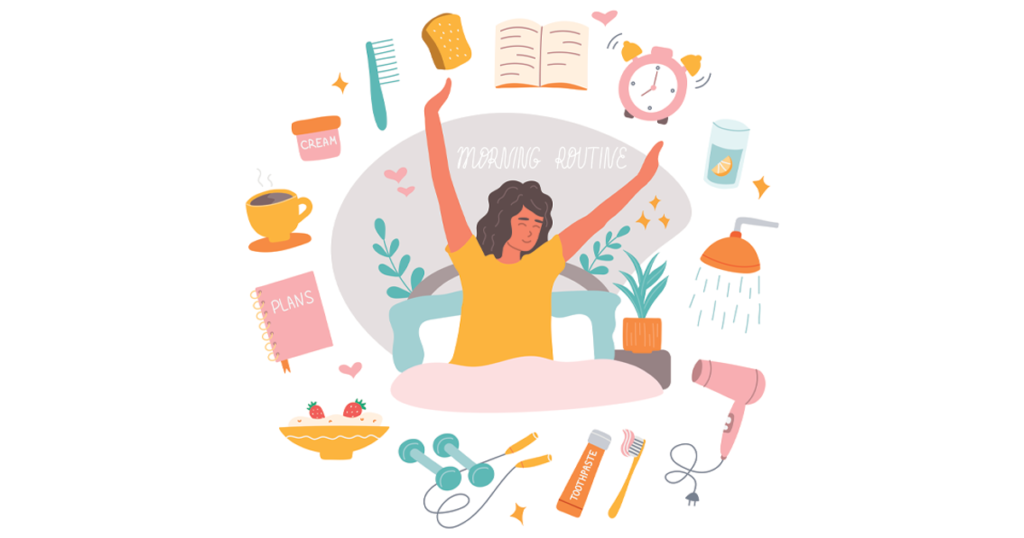Building a Wellness Routine That Sticks: Mind-Body Strategies for National Wellness Month
Introduction: Why National Wellness Month Matters
August is National Wellness Month, a time dedicated to focusing on self-care, managing stress, and building healthy routines that support your mental and physical well-being. But wellness isn’t just about bubble baths or hitting the gym once in a while. Sustainable wellness means creating consistent, balanced habits that nurture your body and mind. This blog will guide you through simple, actionable steps to help you build a wellness routine that fits your life and lasts beyond August.
Step 1: Define What Wellness Means to You
Wellness isn’t one-size-fits-all. For some, it means getting enough sleep and drinking water; for others, it means learning to set boundaries or practicing meditation. Taking time to reflect on your personal definition of wellness helps set the foundation for a routine that truly serves you. Instead of copying someone else's idea of self-care, this step allows you to understand what your body and mind truly need. You may realize that your version of wellness is more about reducing over-stimulation than increasing productivity. Once you clarify your priorities, it becomes easier to make aligned choices. Your answers can become your personal wellness compass.
Start Here:
Take 10 minutes to write down what wellness looks like for you.
Ask yourself: What makes me feel energized, calm, focused, or at peace?
List out areas you want to improve—like sleep, movement, nutrition, connection, creativity, or emotional regulation.
Support Resource: Use the free Self-Care Wheel from PositivePsychology.com to visualize different aspects of wellness in your life.
Step 2: Start Small and Be Consistent
One of the most common mistakes in building wellness routines is trying to do too much, too fast. Instead, choose one small habit to start with. The key is to build success through repetition, not intensity. Starting with one achievable habit gives you the opportunity to build confidence and internal motivation. Over time, the momentum of even one small win can create ripple effects in other areas of your life. Consistency rewires your brain to see this new behavior as a part of your identity. Remember, a small step is still a step forward.
Suggestions:
Drink one full glass of water when you wake up.
Go for a 10-minute walk every day.
Journal for 5 minutes before bed.
Turn off screens 30 minutes before sleeping.
Exercise: Try the "1-1-1 Habit Builder":
1 new habit,
1 time a day,
for 1 week.
Write down your goal and track it in a simple calendar or habit tracker (free ones are available on Loop Habit Tracker or use a notebook).
Photo from Out Smart magazine
Step 3: Focus on Mind-Body Connection
Mental and physical health are deeply connected. Prioritizing the mind-body connection can help reduce anxiety, boost mood, and improve resilience. These practices help calm the nervous system and center your awareness in the present moment. When you connect to how your body feels, it becomes easier to listen to what it needs—whether it’s rest, movement, or nourishment. Regularly tuning in also helps prevent emotional build-up and burnout. A grounded body supports a grounded mind. Integrating these moments throughout your day can bring more ease and clarity.
Suggestions:
Practice body scans or progressive muscle relaxation.
Add breath-work to your day. Try box breathing: Inhale for 4, hold for 4, exhale for 4, hold for 4.
Gentle movement (like yoga, stretching, or mindful walking) can support both emotional and physical wellness.
Exercise: Try this quick grounding routine:
1-minute breathwork
2-minute stretch
3-minute journaling with the prompt: "How does my body feel today?"
Resource: Explore free meditations and breathing exercises at Insight Timer or Plum Village.
Step 4: Address Emotional Wellness
Emotional wellness involves being in tune with your feelings and having tools to regulate them. These practices help calm the nervous system and center your awareness in the present moment. When you connect to how your body feels, it becomes easier to listen to what it needs; whether it’s rest, movement, or nourishment. Regularly tuning in also helps prevent emotional build-up and burnout. A grounded body supports a grounded mind. Integrating these moments throughout your day can bring more ease and clarity.
Suggestions:
Keep a daily mood log to track what was going on that day and how you are feeling.
Practice self-compassion through positive affirmations.
Learn to identify and name your emotions.
Exercise: Use the "Name It to Tame It" approach:
When feeling overwhelmed, pause and say: "Right now, I feel ___ because ___."
Example: “Right now, I feel anxious because I have too many things to do."
Resource: The Mood Meter app from the Yale Center for Emotional Intelligence can help you track emotions and understand emotional patterns: Mood Meter App
Photo from The War Cry
Step 5: Create a Morning or Evening Routine
Routines are powerful because they eliminate decision fatigue and provide structure. Start with either a morning or evening ritual that you can realistically stick to. Routines provide a sense of safety and predictability, which can lower stress and improve mental clarity. Even simple rituals like lighting a candle before journaling or drinking tea before bed can anchor your day in intention. These moments signal your brain that it’s time to wind up or wind down. Over time, your routine becomes a cue for your body and mind to enter a state of calm and focus. Choose rituals that reflect your values and energy needs.
Morning Ideas:
Wake up 10 minutes earlier
Drink water, stretch, and write a 3-item gratitude list
Set an intention for the day
Evening Ideas:
Reflect on 3 things that went well today
Do light stretching
Disconnect from screens 30 minutes before bed
Exercise: Write a list of everything that you do in a part of your day (when you wake up until you get into work, what you do when you get home from work, going to bed). Write down every detail you can think of. Then take a pen and put a plus sign next to each action that is positively effecting you and your goals, and a negative sign next to ones that do not support your needs. Now create a template for “the ideal” routine or plan that makes that time of day flow more positively.
Step 6: Incorporate Connection and Joy
Wellness isn’t just work—it’s also joy, fun, and meaningful connection. Make time for the things that light you up. Joy and connection are not luxuries—they’re essential for mental health. Positive social interactions release oxytocin, which helps reduce stress and improve mood. Creative activities boost dopamine and create a sense of flow, which can be energizing and healing. Reconnecting with what makes you feel alive builds emotional fuel for the tougher days. Make it a habit to ask yourself: What brought me joy today?
Suggestions:
Schedule weekly phone calls or walks with a friend
Explore a new or old hobby or creative outlet
Watch a show or read a book that inspires you
Exercise: Joy Inventory:
List 10 things that make you feel happy, playful, or energized.
Choose one to include in your week ahead and add it to you schedule to commit yourself to action.
Step 7: Give Yourself Permission to Reset
No one is perfect. You will skip days or feel off-track sometimes—and that’s okay. Wellness is not about perfection; it’s about persistence. Life is full of ups and downs, and your routine will naturally shift. What matters most is how you respond when things don’t go as planned. Giving yourself permission to reset helps avoid the all-or-nothing mindset. This flexibility is what allows your routine to adapt to real life. When you approach setbacks with curiosity instead of criticism, you're more likely to return to your habits with renewed intention.
Suggestions:
Keep a "reset phrase" like: "Progress, not perfection."
Reflect on what got in the way and how you can adjust.
Start again with compassion, not shame.
Resource: Brene Brown’s work on self-compassion and vulnerability offers great insights. Visit BreneBrown.com for free talks and tools.
Step 8: Seek Support When You Need It
Mental health professionals can help you build or fine-tune your wellness routine, especially if you struggle with anxiety, depression, ADHD, or burnout. Working with a therapist can provide personalized strategies, accountability, and emotional support. You don’t have to build your wellness routine alone—especially when mental health challenges feel overwhelming. Therapy can help uncover underlying patterns that interfere with your habits and teach you skills to navigate life more effectively. Sometimes, the most supportive step is reaching out.
Ways to Find Support:
Visit Acorn and Oak Services to connect with me for therapy services.
Look for providers on Psychology Today that best meet the goals you are working on.
Look for a local support group or fun club in your area to connect with others who share similar interests or goals
Conclusion: Start Where You Are
Wellness isn’t about doing everything right; it’s about making intentional choices to care for your mind and body. Whether you begin with a 5-minute journal entry, a walk around the block, or a deep breath before bed, you are already on the path.
This National Wellness Month, give yourself the gift of slow, steady care. Start small. Stay consistent. And remember, sustainable wellness is built one habit at a time.
Need support building your personalized wellness plan? Schedule a consultation with me through Acorn and Oak Services today by sending me a message, or schedule directly through my portal at Headway.





